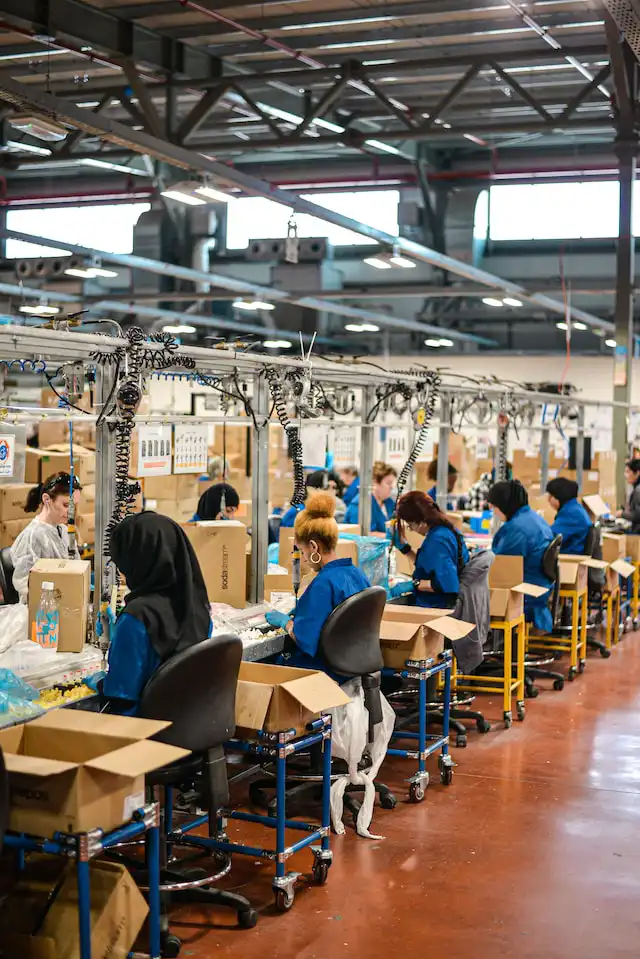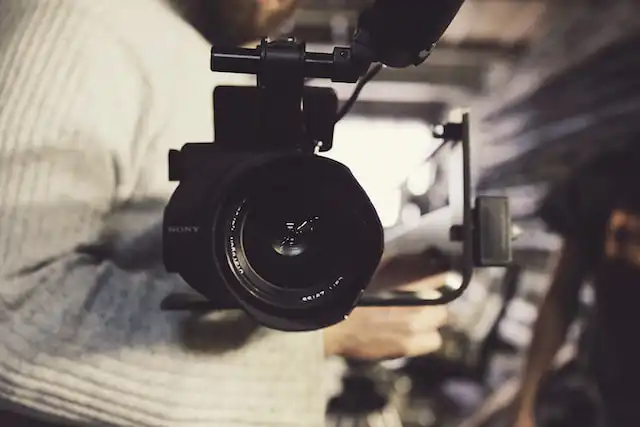
Asia Pacific Athletic Apparel and Footwear Market Outlook to 2017
Online Retail Boom to Escalate Demand
Region:Asia
Product Code:KR27
February 2013
202
About the Report
The athletic apparel and footwear market in Asia-Pacific has surged in the recent years due to a rise in consumer inclination towards healthy lifestyles, spur in sports participation rate, changing fashion trends and shifting consumer preferences towards popular brands. The market has exhibited prolonged development due to the driving factors such as rising demand for innovative designs, growing awareness about healthy and active lifestyle, rising population and disposable income levels and the growth of retail culture in the region over the last few years.
The market for athletic apparels and footwear is mainly held by China, Japan, Australia, and India with China. China has been the largest contributor to athletic apparel market with a share of ~% to the revenue generated through the sales of athletic apparels in the region followed by Japan with a share of ~% and Australia and India together accounting for ~% of the revenue in 2012.The athletic footwear market in the region is primarily held by China generating ~% of the market followed by Japan generating revenue worth USD ~ million in 2012. Australia and India together held ~% of the market in 2012.
The athletic apparel market in 2012 has recorded a remarkable value of USD ~ million as compared to USD ~ million in 2006.During 2011, the macroeconomic environment in China was intricate than that seen in previous years, with the overall growth trend showing a general slowdown. The country experienced high inflation and adopted tight monetary policies throughout the year. The sportswear industry experienced steady growth in China during 1H2011. Consequently, the revenue of athletic wear market in China dipped to USD ~ million in 2012 as compared to USD ~ million in 2011.
Menswear has occupied the dominant position in the market in 2012 contributing nearly ~% to the overall market. On the other hand, womenswear contributed nearly ~% to the overall sportswear market in China. Cross Training shoes have been the largest contributor to the athletic footwear market in China accounting for a share of nearly ~% in 2012 and generating revenue worth USD ~ million during the year.
The market is concentrated among the leading domestic players including Anta Sports and Li- Ning leading the market with share of `% and ~% in 2011 respectively followed by 361 degree and Xtep contributing ~% and ~% respectively.
The market in Japan has grown at a negative CAGR of 2.1% from 2006-2012. In 2012, the market was valued at USD ~ million as compared to USD ~ million in 2006. Massive earthquakes, tsunami and nuclear power plant explosions have devastated many areas in the north of Japan, leading to millions of people caught in the tragedy. It was observed that in 2006 the production of athletic apparels was ~ thousand units which plunged to ~ thousand units in 2012.
The Japan athletic apparel market is concentrated with the presence of several large scale and small scale manufacturers, retailers and wholesalers, of which the top 6 companies contribute around ~% of the total athletic apparel market revenue in 2011. The market in 2011 was led by the domestic player Descente with ~% contribution to the total athletic apparel market revenue. The second leading player in athletic apparel market in Japan is Goldwin which contributed ~% to the overall revenue of athletic apparel market in 2011. The company generated total revenue of USD ~ million from athletic apparels in 2011
Running shoes held the dominant share of ~% in the overall athletic footwear market in Australia and generated revenue worth USD ~ million in 2012. Cross training footwear held third position in athletic footwear market in Australia, accounting for nearly ~% of the overall market in 2012, followed by football, court indoor and outdoor sports footwear and basket footwear together contributing nearly ~% to the market in 2012
Athletic apparel market in India is majorly contributed by menswear which accounted for a share of ~% in 2012 and generated revenue worth of USD ~ million. Womenswear is the second largest segment of athletic apparel market in India with a share of nearly ~%. Lifestyle footwear is the second leading segment of the market with a share of ~%, followed by soccer footwear accounting for nearly ~% of the market in 2012.
KEY TOPICS COVERED IN THE REPORT
- The market size of the Asia-Pacific athletic apparel and footwear Industry, 2006-2012.
- The market size of the athletic apparel and footwear market in the countries such as China, Japan, Australia and India, 2006-2012.
- Market segmentation of athletic apparel market in China, Australia and India by gender, 2012
- Market Segmentation of athletic footwear market by footwear categories in China, Japan, Australia and India, 2012
- Market Share of leading players in athletic apparel market in China and Japan,2011
- Market share of leading players in athletic footwear market in China and Japan , 2011
- Market share of athletic apparel and footwear in India, 2011.
- Competitive landscape of major players in Australia athletic apparel and footwear market
- Trends and developments in athletic apparel and footwear market in China, Japan, Australia and India
- Future outlook and projections of the basis of revenue in Asia-Pacific and by countries: China, Japan, Australia and India, 2013-2017
- Macroeconomics and industry factors including personal disposable income, population, GDP, import and export of sports footwear, consumer expenditure on clothing and footwear.
Products
Athletic Apparel, Athletic Footwear, Athletic Wear
Companies
Nike, Adidas, Puma, Anta Sports, Li-Ning, 361 Degrees International Limited, Xtep International Ltd, Kappa, Asics, Mizuno, Descente, Goldwin Inc, Bata, Woodland, Liberty
Table of Contents
1. Asia-Pacific Athletic Apparel and Footwear Industry Introduction
1.1. Asia-Pacific Athletic Wear Market Size by Revenue, 2006-2012
1.1.1. By Athletic Apparel, 2006-2012
1.1.2. By Athletic Footwear, 2006-2012
2. Asia-Pacific Athletic Wear Market Segmentation, 2006-2012
2.1. By Athletic Apparel and Footwear, 2006-2012
2.2. By Geography, 2006-2012
3. Major International Players in Asia-Pacific Athletic Apparel and Footwear Market
3.1. NIKE
3.1.1. Company Overview
3.1.2. Business Strategy
3.1.3. Financial Performance, FY'2008-FY'2012
3.2. Adidas Group
3.2.1. Company Overview
3.2.2. Business Strategy
3.2.3. Financial Performance, 2008-2012
3.3. PUMA
3.3.1. Company Overview
3.3.2. Business Strategy
3.3.3. Financial Performance, 2008-2012
4. Asia-Pacific Athletic Apparels and Footwear Industry: Trends and Developments
5. Asia-Pacific Athletic Apparel and Footwear Market Future Outlook and Projections, 2013-2017
5.1. By Geography, 2013-2017
5.2. Cause and Effect Relationship Between Industry Factors and the Asia-Pacific Athletic Apparel and Footwear Market Prospects
6. China Athletic Apparel and Footwear Industry Introduction
6.1. China Athletic Wear Market Size, 2006-2012
6.1.1. By Athletic Apparel, 2006-2012
6.1.2. By Athletic Footwear, 2006-2012
6.2. China Athletic Wear Market Segmentation
6.2.1. By Athletic Apparel and Footwear, 2006-2012
6.2.2. Atheltic Apparel by Gender, 2012
6.2.3. Athletic Footwear By Product Categories, 2012
6.2.4. Athletic Footwear by Gender, 2012
6.2.5. China Indoor Athletic Wear Market
6.3. China Athletic Apparel and Footwear Industry: Trends and Developments
6.4. Market Share of Major Players in China Athletic Wear Market, 2011
6.4.1. By Athletic Apparel, 2011
6.4.2. By Atheltic Footwear, 2011
6.5. Company Profiles of Major Domestic Players in China Athletic Apparel and Footwear Market
6.5.1. Anta Sports Products Ltd.
6.5.2. Li-Ning
6.5.3. 361 Degrees International Limited
6.5.4. Xtep International Ltd.
6.5.5. Kappa
6.6. Macro-Economic Factors of China Athletic Apparel and Footwear Industry, 2006-2017
6.6.1. Population, 2006-2017
6.6.2. Per Capita Annual Consumption Expenditure on Clothing, 2006-2017
6.6.3. Per Capita Income of Households, 2006-2017
6.7. China Athletic Apparel and Footwear Market Future Outlook and Projections, 2013-2017
7. Japan Athletic Apparel and Footwear Industry Introduction
7.1. Japan Athletic Apparel Market Size, 2006-2012
7.1.1. By Value, 2006-2012
7.1.2. By Volume, 2006-2012
7.2. Japan Athletic Footwear Market Size, 2006-2012
7.2.1. By Value, 2006-2012
7.2.2. By Volume, 2006-2012
7.3. Japan Athletic Apparel Market Segmentation, 2006-2012
7.3.1. By Product Categories, 2006-2012
7.3.2. By Woven Category, 2006-2012
7.3.3. By Knit Category, 2006-2012
7.4. Japan Athletic Footwear Market Segmentation, 2006-2012
7.4.1. By Value, 2006-2012
7.4.2. By Volume, 2006-2012
7.5. Market Share of Major Players in Japan Athletic Apparel and Footwear Market, 2011
7.5.1. By Athletic Apparel, 2011
7.5.2. By Athletic Footwear, 2011
7.6. Company Profiles of Major Domestic Players in Japan Athletic Apparel and Footwear Market
7.6.1. Asics
7.6.2. Mizuno
7.6.3. Descente
7.6.4. Goldwin Inc.
7.7. Japan Athletic Apparel and Footwear Industry Trends and Developments
7.8. Macro Economic Factors of Japan Athletic Apparel and Footwear Industry, 2006-2017
7.8.1. Population, 2006-2017
7.8.2. Consumer Expenditure on Clothing and Footwear, 2006-2017
7.8.3. Gross Domestic Product, 2006-2017
7.9. Japan Athletic Apparel and Footwear Market Future Outlook and Projections, 2013-2017
8. Australia Athletic Apparel and Footwear Industry Introduction
8.1. Australia Athletic Apparel and Footwear Market Size, 2006-2012
8.1.1. By Athletic Apparel, 2006-2012
8.1.2. By Athletic Footwear, 2006-2012
8.2. Australia Athletic Apparel Market Segmentation
8.2.1. By Gender, 2012
8.2.2. By Product Categories, 2012
8.3. Market Share of Major Distribution Channels in Australia Athletic Apparel and Footwear Industry, 2011
8.3.1. By Athletic Apparel, 2011
8.3.2. By Athletic Footwear, 2011
8.4. Competitive Landscape of Australia Athletic Apparel and Footwear Industry
8.5. Australia Athletic Apparel and Footwear Industry: Trends and Developments
8.6. Macro Economic Factors of Australia Athletic Apparel and Footwear Industry, 2006-2017
8.6.1. Population, 2006-2017
8.6.2. Consumer Expenditure on Clothing and Footwear, 2006-2017
8.6.3. Import of Athletic Footwear in Australia, FY'2006-FY'2017
8.6.4. Export of Athletic Footwear from Australia, FY'2006-FY'2017
8.7. Australia Athletic Apparel and Footwear Market Future Outlook and Projections, 2013-2017
Why Buy From Us?

What makes us stand out is that our consultants follows Robust, Refine and Result (RRR) methodology. i.e. Robust for clear definitions, approaches and sanity checking, Refine for differentiating respondents facts and opinions and Result for presenting data with story

We have set a benchmark in the industry by offering our clients with syndicated and customized market research reports featuring coverage of entire market as well as meticulous research and analyst insights.

While we don't replace traditional research, we flip the method upside down. Our dual approach of Top Bottom & Bottom Top ensures quality deliverable by not just verifying company fundamentals but also looking at the sector and macroeconomic factors.

With one step in the future, our research team constantly tries to show you the bigger picture. We help with some of the tough questions you may encounter along the way: How is the industry positioned? Best marketing channel? KPI's of competitors? By aligning every element, we help maximize success.

Our report gives you instant access to the answers and sources that other companies might choose to hide. We elaborate each steps of research methodology we have used and showcase you the sample size to earn your trust.

If you need any support, we are here! We pride ourselves on universe strength, data quality, and quick, friendly, and professional service.















